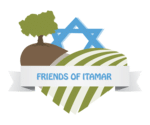Parshat Tazriah – Mezorah – 2010
Parshat Tazriah – Mezorah March 16, 2010 Rabbi Moshe Goldsmith This week we merit in a double portion of the week Parshiot Tazriah and Mezorah. Interestingly, most of these
Parshat Shemini – 2010
Parshat Shemini March 8, 2010 Leah Goldsmith Please see Shemini 2009 The shalosh regalim, the three major Jewish festivals – 1) Sukkot – when we go out from the solid walls of
Parshat Tizaveh- Purim – 2010
Parshat Tizaveh- Purim February 25, 2010 In this week’s Parasha there is a clear hint to the holiday of Purim. In Parshat Tizaveh Moshe Rabbeinu is commanded to tell Aaron th
Parshat Mishpatim – Trumah – 2010
Parshat Mishpatim – Trumah February 12, 2010 Exodus 24:7 – “And Moshe took the book of the covenant and read in the hearing of the people and they said, “All that t
Parshat Yitro – Modesty Above Wisdom – 2010
Parshat Yitro February 5, 2010 Rabbi Moshe Goldsmith This week’s Torah portion is named after Yitro, Moshe Rabeynu’s father-in-law a former Midyanite priest. Our sage
Parshat Beshalach – 2010
Parshat Beshalach January 28, 2010 “And the children of Israel went into the midst of the sea on dry ground and the waters were a wall to them on their right hand and on thei
Parashat Bo – 2010
Parshat Bo January 23, 2010 Leah Goldsmith Like a big fish in a small pond, Pharoh ruled from his throne on the Nile. As this watering place replenished itself (and there was n
Parashat Vaera – 2010
Parshat Vaera January 15, 2010 “And G-d spoke to Moshe and said to him. I am the Lord, and I appeared to Avraham, to Yitzchak, and to Ya’akov, by the name of G-d Almigh
Parashat Shemot – G-D Watches Over His righteous Nation 2010
Parshat Shemot January 8, 2010 King Solomon in his book of Proverbs 13:23 writes “Much food is in the tillage of the poor: but there are others that perish without judgment.&
Parshat Vayechi – 2010
Parshat Vayechi January 1, 2010 Leah Goldsmith The root of the word Mitzrayim, tzar, means a narrow narrow place. When looking at an Atlas one can see this is not the case; it is g

